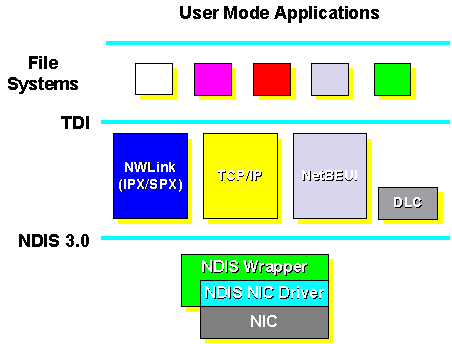

The networking architecture of Windows NT is organized in layers. This provides expandability by allowing other functions and services to be added.
A boundary is the unified interface between the layers in the Windows NT network architecture model. Creating boundaries as a breakpoint in the network layers helps open the system to outside development. It makes it easier for vendors to develop network drivers and services because the functionality that must be implemented between the layers is well defined. They only need to program between the boundary layers instead of going from the top to the bottom layer. Boundary layers also allow software developed above and below a level to be mixed and matched without rewriting it.
There are two significant boundary layers in the Windows NT network architecture: the NDIS 3.0 layer and the Transport Driver Interface (TDI) boundary layer. The NDIS 3.0 boundary layer provides the interface to the network driver interface specification (NDIS) wrapper and device drivers. The TDI boundary layer provides a common interface for a driver, such as the Windows NT redirector and server, to communicate with the various network transports. This allows redirectors and servers to remain independent from transports. Unlike NDIS, there is no driver for TDI, it is simply a standard for passing messages between two layers in the network architecture.